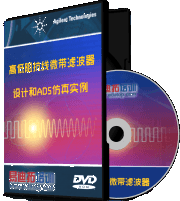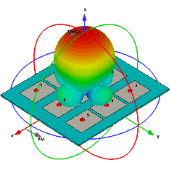求助: HFSS 中初始化网格设置的问题
Lz大哥怎么会纠结这个问题,与仿真关系不大吧?
软件默认为Tau mesh,是一种非常严格的网格划分方法,模型中稍有问题,就无法通过网格划分与检查。好处是网格质量高,计算精度有保证,坏处是比较挑模型。
classic mesh稍微没有那么严格。
仿真微带多层天线,考虑更多的应该是你的边缘效应,胶层、过渡结构,金属化过孔 与接地、对准等问题。
如果要借助手动网格细化仿真,可以对贴片的边棱进行细化,这个是场最强的地方,其他的,完全没必要。
我在仿真时使用 classic mesh, 仿真时间与网格数都比 TAU mesh 要少得多, 只是计算的精度没有 TAU mesh 高。 HFSS 的 help 文档中说仿真多层微带结构, TAU mesh 的初始网格数要比 classic mesh 的初始网格数多4倍。
Depending upon the model, sometimes Classic converges with fewer resources whereas Tau may converge faster. Whatever mesh is selected, the converged results are accurate. We recommend you use Auto since HFSS automati-cally determines the correct choice of the mesher for a given geometry.
Note: For HFSS 3D Layout, Phi mesher is an advanced layout-based meshing technology that can produce meshes rapidly and generate fast and accurate results.
不妨试下Designer 中的phi mesh, 非常快速。(2014版本以后)
相关文章:
- 四面体与六面体网格划分!(05-08)
- 如何手动增加网格的固定点(05-08)
- 请问用hfss仿真复杂电磁环境该如何划分网格,划分的依据是什么(05-08)
- CST2006B 子网格设置(05-08)
- 请教CST2006B 子网格如何设置。(05-08)
- 请问高手网格应该怎么划分啊(05-08)











